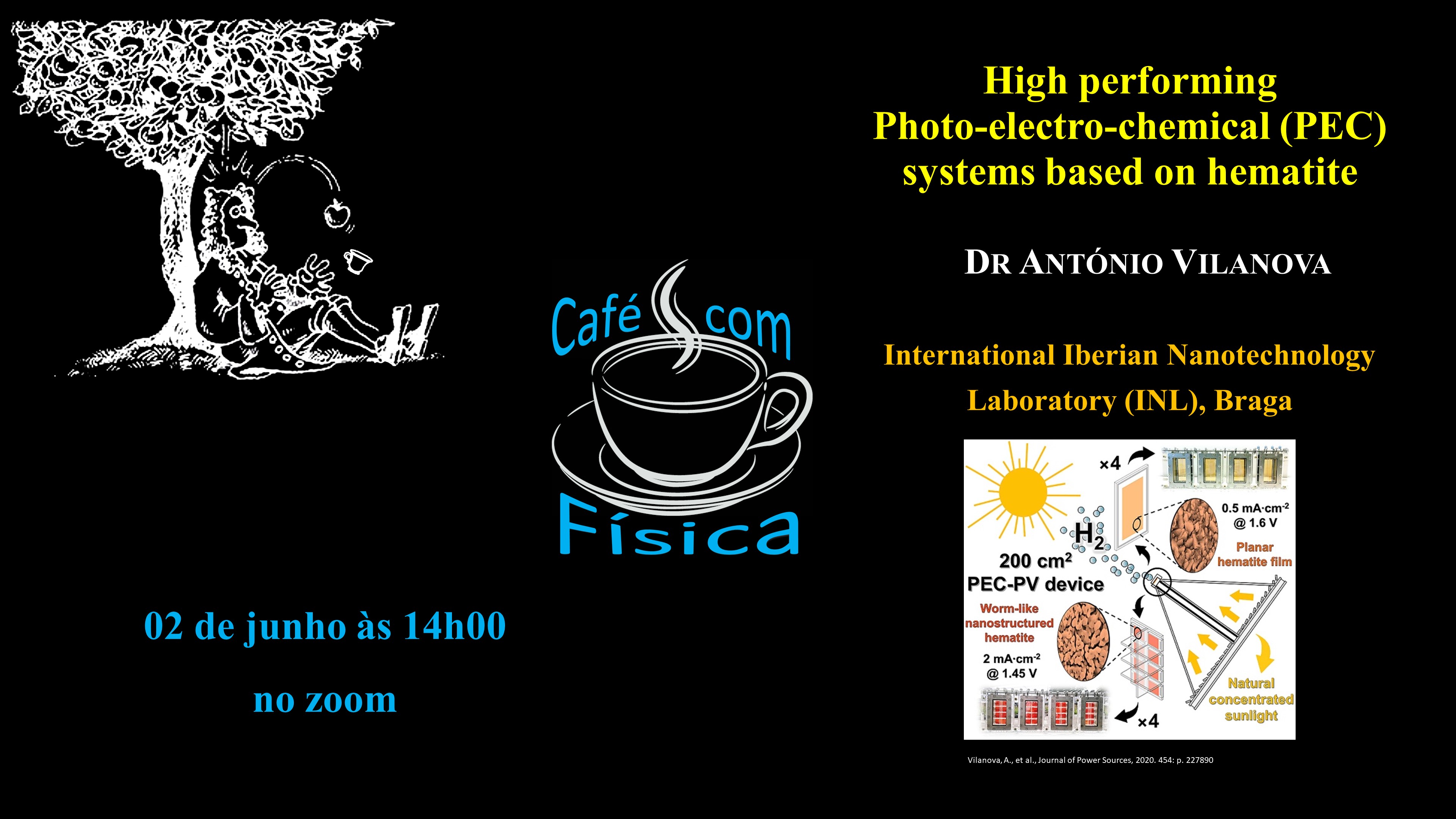Café com Física
High performing Photo-electro-chemical (PEC) systems based on hematite
by
→
Portugal
Sala de Conferências (Departamento de Física FCTUC)
Sala de Conferências
Departamento de Física FCTUC
Universidade de Coimbra
Description

At present, green-H2 is unambiguously recognized as “key-player” in the energy market for the upcoming decades. In a recent report, the EU Commission states that green-H2 is a key priority to achieve the European Green Deal, since H2 ensures backup for seasonal variations, while replacing fossil fuels in some carbon-intensive industrial processes. Photoelectrochemical (PEC)-H2 production is one of the most promising technologies for producing green-H2 and several life-cycle assessment (LCA) studies have shown that this technology has one of lowest associated environmental impacts.
The basic concept underneath PEC water splitting is the natural process of photosynthesis since PEC devices aim at directly converting incident photons into a fuel.[1] In PEC devices, H2 is produced at the cathode, and O2 is produced at the anode, being both electrodes in contact with an electrolyte. To beat photovoltaic-electrolysis, which is the commercial technology closer to PEC systems, these devices will require serious advances in the efficiency and chemical stability of the photoactive materials.[2] Hematite (α-Fe2O3) is one of the most promising photoactive materials able to meet the requirements needed to make PEC-H2 commercially viable. Still, to achieve this goal, it is mandatory to overcome the main drawback of these systems: recombination.[3]
The Nanofabrication for Optoelectronic Applications (NOA) group of INL will investigate in detail recombination-related problems in α-Fe2O3 photoelectrodes using advanced characterization techniques to identify the main causes of performance losses. As so, the NOA group has the ultimate goal of producing highly efficient hematite photoelectrodes that incorporate selective layers fabricated with state-of-the-art equipment.
REFERENCES
1. Kim, J.H., et al., Toward practical solar hydrogen production–an artificial photosynthetic leaf-to-farm challenge. Chemical Society Reviews, 2019. 48(7): p. 1908-1971.
2. Rothschild, A. and H. Dotan, Beating the efficiency of photovoltaics-powered electrolysis with tandem cell photoelectrolysis. ACS Energy Letters, 2016. 2(1): p. 45-51.
3. Vilanova, A., et al., Solar water splitting under natural concentrated sunlight using a 200 cm2 photoelectrochemical-photovoltaic device. Journal of Power Sources, 2020. 454: p. 227890.
Sala zoom:
https://videoconf-colibri.zoom.us/j/81310717360?pwd=OUhFb21paEhaOUE0cTVjZE1wdWQ4QT09
ID da reunião: 81310717360
Password: 055056
Organised by
Filipe Veloso e Pedro Costa
